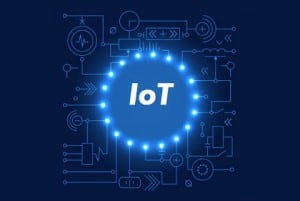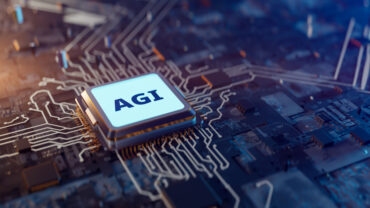
The sheer volume of data involved in Internet of Things applications makes intelligent IT automation a critical element.
Few people would argue against real-time computing as a functional imperative of IoT. There’s not much value in creating an autonomous vehicle, supported by thousands of IoT sensors, if those sensors can’t instantly share and process the data necessary to accelerate onto an onramp—or slam on the breaks to prevent an accident.
What’s more, the number of connected devices are reaching mind-boggling proportions, making real-time data management essential. Experts predict up to 30 billion autonomous devices will be connected via the Internet by 2020. Research firm IDC forecasts the installed base of IoT devices will extend to 212 billion things—phones, sensors, various devices, and systems by that same year. The spending on information and communications technology and services associated with IoT, already at $4.8 trillion globally in 2012, is estimated to increase to $8.9 trillion by the end of this decade.
If these well-considered predictions prove correct, someone—or something—of significant capability will have to direct all the processes driven by those devices. That something is IT automation.
In order for connected devices to perform their functions, instant decision-making is critical. Factory production and transportation safety equipment depend on up-to-date information; healthcare, finance, retail and many other industries require immediate, or nearly immediate, analysis within their IoT systems.
Power plant monitoring and management is another illustration of the real-time nature of IoT. For power plants to be effectively managed from a central location, a myriad of sensors, controllers, and smart devices must be coordinated. The data these devices generate must be continuously collected and analyzed in real time, with alerts and updates provided instantly to employees’ mobile phones and tablets.
The sheer volume of data involved in IoT makes intelligent IT automation a critical element. From setting home management instructions while on vacation to orchestrating the movement and activity of a self-propelled mining truck, decisions have to be made based on information. Big data is both the byproduct and engine of IoT—and manual processing, due to the risk of errors and miscalculations, is insufficient to handle the millions of tasks involved.
In the past, a more traditional mix of hardware, software, and skilled IT workers typically handled complex data processing tasks. In this new era, however, an exponential increase in resources and speed is called for. While the introduction of cloud and virtual services has created a flexible, pay-as-you-go environment for digital assets, IT manpower continues to be stretched to the limit. Organizations need to find solutions that can effectively close the staffing gap and keep up with the challenges and potential of cloud computing.
IT Automation and Rules-Based Processing
As with most forms of enterprise computing, IoT relies on policy-based, rules-driven processing—the fundamental value-add of intelligent IT automation. Automation solutions collect data from devices, then pass that data to other devices that analyze it on-the-fly. When results are ready, the automation platform automatically alerts the proper individuals and devices.
Automation also ensures that downstream processing continues without interruption. In the event of a slowdown or blockage, automation directs IT staff to the problem location via real-time monitoring, ensuring the issues is resolved quickly and efficiently while minimizing time to resolution.
IT automation serves as the central hub for data processing, enabling reliable, end-to-end workflow execution across many different applications, operating systems and computing systems. It already has built-in integrations to the applications that manage ETL, business intelligence, file transfers, and other important processing tasks.
Perhaps most valuable of all are smart analytics that can find and make sense of the critical insights embedded in the massive IoT data stream. These analytic capabilities connect the seemingly random dots in IoT and present them where needed, along with recommendations for action. With an automation solution governing workflows, disparate activities are coordinated and devices perform as expected.
Thankfully, the requisite tools for real-time IoT are right at hand. In addition to internet connectivity, virtual and cloud-based computing systems are common. IT automation is the unifying piece of the puzzle.
Rules-based, policy-driven IT automation interprets the processes, understands the dependencies, and monitors the executions of tasks to ensure that the right things are done in the right order, by the correct people and devices, in real time. With IoT at the forefront of the next era in computing, it’s important to think about how this technology will be coordinated to fulfill its promise. Intelligent IT automation is the key—and the time to start planning is now.





























